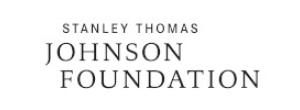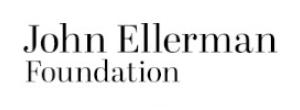NWANDO EBIZIE: WRITING THE FUTURE
NWANDO EBIZIE: WRITING THE FUTURE
Turning the traditional concert experience on its head
Colour Factory, Hackney Wick
Fall and Then Rise on a Soft Winter’s Morning
The piece consists of six parts:
Interlude 1:
i. I could have fallen
ii. Dream Interlude
2: The Three Embraces
iii. Rise of the Clowns
End: Embrace the Night
The inception of the idea for this piece arose when I played a gig at a disabled Arts festival. This ritual live-art gig invited the audience to hug balloons and whisper their fears into them. Afterwards, a group of Deaf people approached me and thanked me for this element. They pointed out that the piece worked well for them – not only because it was so visual, but the use of balloons was something they used at school. Some could hear their own voices by using them, and for others, it meant they could feel the vibrations of the music. This really touched me – and I decided to make a sensory world based on balloons, floating, vibration. Where everybody could have analogous sensory experiences.
I then started working with Deaf dancer and movement artist Chisato Minamimura. I gave her the text of the piece and we worked to translate it into British Sign Language, which was a really fascinating process. BSL is very different from English, so you can’t do a one-to-one translation, and it also has a choreographic logic to it. I’m a dancer as well, and I like to work backwards from the dance to the music. So I reflected the musicality and the rhythm and the expression of the dance in the music.
My research into this area is always ongoing. Questions that have come up during the process of writing this piece, like ‘What if I wrote from a different perspective, after now beginning to understand BSL?’ But generally the idea is that you come into a one-hour experience, and that when you leave, you feel like something’s happened; something’s changed a bit in your inner world. This piece is probably the most ‘classical’ thing I have written. The beginning is quite experimental and descriptive of the movement. It’s like a feeling of anticipation.
When I was writing I was thinking a lot about Shostakovich’s Fifth Symphony, and quite a lot about Mahler. There’s also a klezmer influence from an old friend of mine who plays the clarinet, mixed with an Angela Carter reference. Angela Carter’s Nights At The Circus inspired a lot of the performance’s third act. The scenes in her writing are so real and alive to me, particularly a scene at the end of the book, set in Siberia, which has haunted me for years. In essence, it involved clowns and a snow tornado, but it also transformed in my head to being about revolutionary fervour, a changing of epochs, so it’s a nod to that.
I had a scene of different spirits from different Black ritual cultures, meeting to create this revolutionary moment. I started working on it on the design concept with Nat Sharp quite a while ago. I told her I wanted balloons in the concert, and so she made some really beautiful designs. She also made Chisato’s big, beautiful costume, a voluminous silk dress that can show interesting movement. Nat also created all the visuals projected onto balloons. In the future, I would like to explore further the ritual elements in the interludes.
The main difference between ritual and performance is that the roles are more delineated. The possible impact of inviting people to perform roles other than audience and spectator is particularly interesting. - Nwando Ebizie
Chisato Minamimura dancer
Nat Sharp art director
Chloe Rooke conductor
London Sinfonietta




If you are enjoying our films, please do consider donating at whatever level you can afford to support the London Sinfonietta’s work and musicians both now and in the future – in schools, on the concert platform and in the community. It might be the price of a coffee, or the cost of a ticket to one of our live events.
Published: 7 Nov 2024